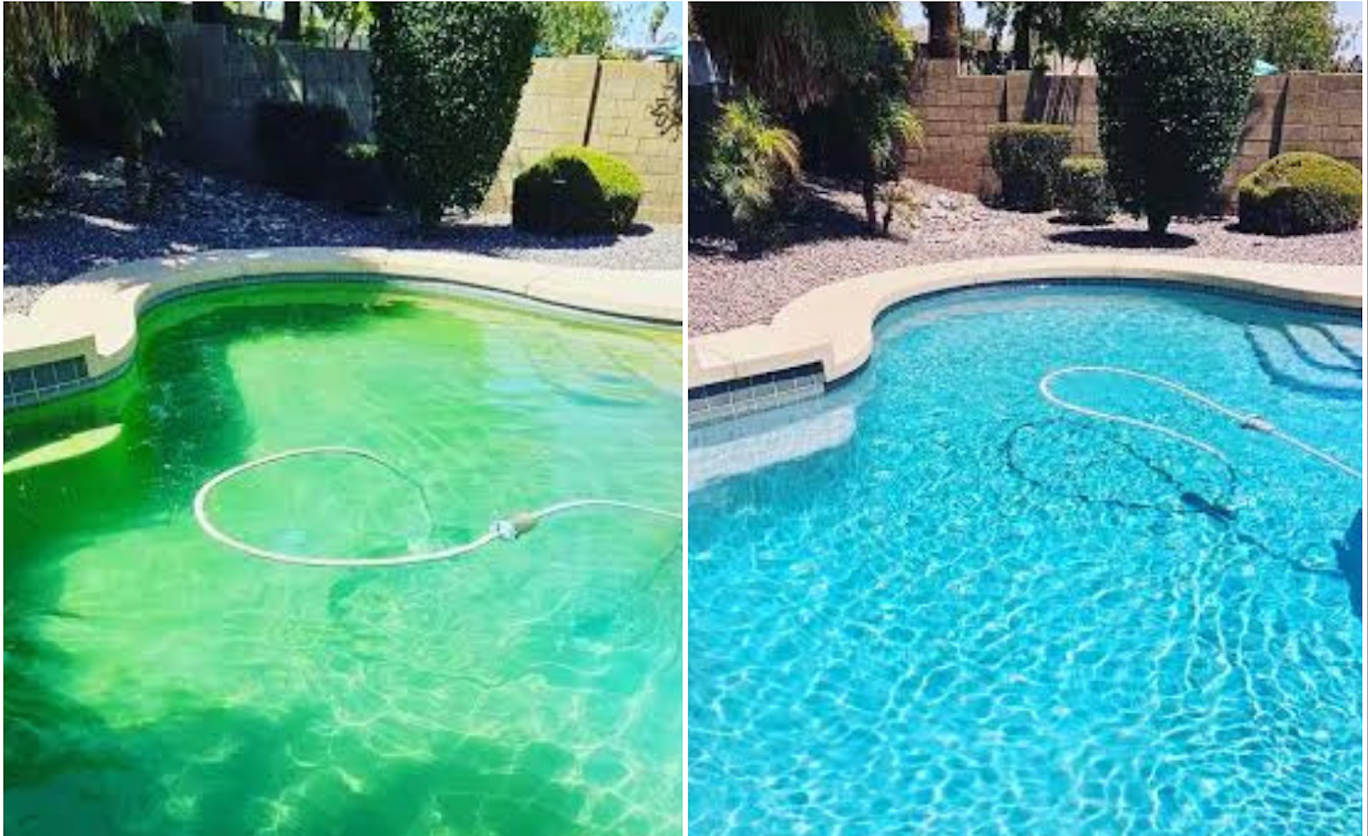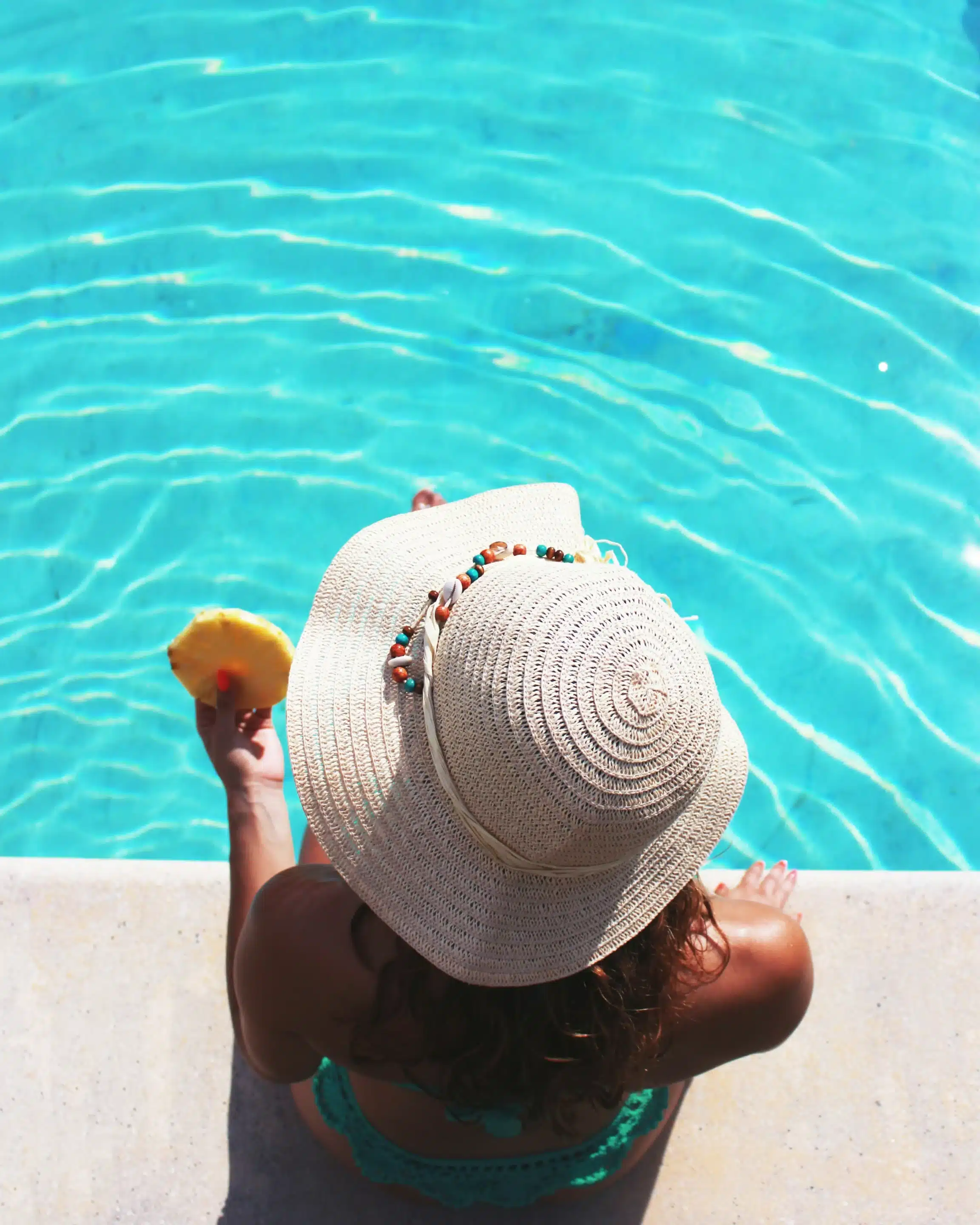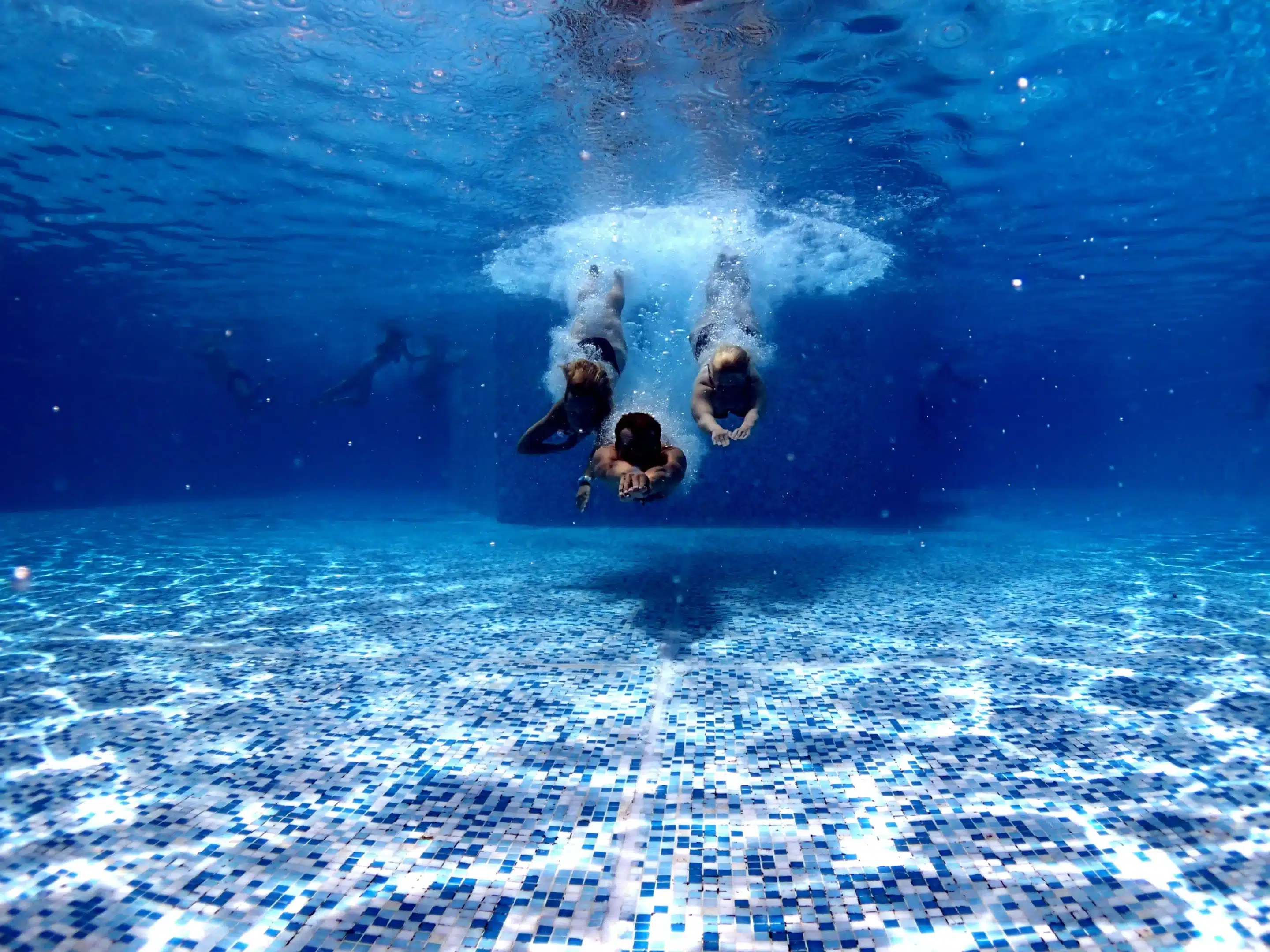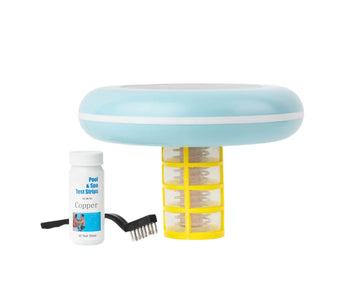
How to Fix Green Pool Quickly
A green pool can be a homeowner's nightmare. It's an unwelcome sight, especially when you're looking forward to a refreshing swim.
But what causes pool to turn green? Why do pools turn green? how to clean green pool water? The answer is usually algae. These microscopic organisms can multiply rapidly, turning your pool into a murky, green mess.
Don't worry, though. This guide will help you fix your green color pool water quickly. We'll walk you through the steps to restore your pool to its sparkling, inviting state.
First, we'll help you understand the problem. We'll explain what causes a pool to turn green and how to identify different shades of green in your pool water.
Next, we'll guide you through the initial steps to fix a green pool. This includes testing your pool water and adjusting the chemical levels.
Then, we'll delve into the cleaning process. We'll cover brushing and vacuuming, how to shock a pool that is green, and running the filter.
Finally, we'll discuss post-treatment steps and how to prevent future green pool issues. We'll also provide troubleshooting tips for common green pool problems.
So, let's dive in and cure green pool to its clear, blue glory.
Table of Content
- Understanding the Green Pool Problem
- What Causes a Pool to Turn Green?
- Identifying Different Shades of Green
- Initial Steps to Fix a Green Pool
- Testing Your Pool Water
- Adjusting Chemical Levels
- The Cleaning Process
- Brushing and Vacuuming
- Shocking the Pool
- Running the Filter
- Post-Treatment Steps
- Rebalancing Pool Chemistry
- Cleaning or Replacing the Filter
- Preventing Future Green Pool Issues
- Regular Maintenance and Monitoring
- Advanced Prevention Techniques
- Troubleshooting Common Green Pool Problems
- When the Pool Remains Green After Treatment
- Addressing Cloudy Water Post-Treatment
- Dealing with Recurring Algae Issues
- Conclusion and Professional Help
- When to Call a Professional
- Final Thoughts on Maintaining a Clear Pool
Understanding the Green Pool Problem
Dealing with a green pool can be frustrating. It's a common issue many pool owners face at some point. The bright side is that understanding the causes makes solving the problem simpler.
A green pool is often the result of algae. Algae thrive on poor chemical balance and inadequate filtration. To fix the issue, you must address these underlying causes.
Common signs your pool is turning green include cloudy water and visible green discoloration. It's important to act quickly to prevent the situation from worsening.
Here's a quick checklist for identifying a green pool problem:
- Check pool water for cloudiness or green tint.
- Test water chemistry levels: pH, chlorine, alkalinity.
- Assess filtration efficiency and the cleanliness of equipment.
After spotting the problem, it's time for action. Begin with testing the water, then adjust chemical levels as needed. This ensures algae can’t thrive in your pool.
Lastly, focusing on thorough cleaning is crucial. This involves manual brushing and a thorough vacuuming session. Proper cleaning helps eradicate algae from surfaces entirely.
What Causes a Pool to Turn Green?
The key reasons a pool turns green are varied. Algae growth, chemical imbalances, and filtration issues play significant roles. Understanding these factors is essential for an effective fix.
Algae loves a poorly balanced pool. It quickly spreads in water with low chlorine. Chlorine is vital for keeping a pool germ-free and clear of algae.
Filtration issues contribute to a green pool. If a filter isn’t functioning properly, particles and algae stay in the water. Clean or replace the filter if necessary.
Inconsistent pool cleaning and maintenance encourage algae. Regular brushing and vacuuming are necessary to keep algae at bay.
Weather affects pool water. Rain introduces dirt and contaminants, disrupting chemical balance. Overcast days also reduce chlorine effectiveness.
Sunlight impacts chlorine levels, too. Direct sun breaks down chlorine, making it hard to maintain proper levels. Using a stabilized chlorine product can help.
Phosphates in water serve as algae food. Managing phosphates is another way to prevent pool water from turning green.
By understanding these causes, you can effectively tackle and prevent a green pool. Consistent maintenance and chemical management are the keys to success.
Identifying Different Shades of Green
Recognizing different shades of green in pool water helps identify the problem's severity. Light green typically indicates early algae growth. This is often easier and quicker to address.
Dark green or teal suggests a more serious issue. Heavy algae growth might have been present for some time. Immediate action is necessary to prevent further complications.
Sometimes, the green tint is due to metals in the water. These metals can cause discoloration when oxidized, appearing as a green hue.
By evaluating the shade, you decide the urgency and type of treatment needed. Light green often requires simple chemical adjustments and cleaning. In contrast, darker shades need intensive cleaning and chemical treatments.
Accurately assessing your pool’s condition leads to faster, more effective solutions. Understanding the nuances of green can save time and effort.
Initial Steps to Fix a Green Pool
Before diving into thorough cleaning, begin with some essential steps. These initial actions set the stage for effective treatment of a green pool.
First, assess the condition of your pool. A visual check helps determine the severity of the green water issue.
Next, gather necessary supplies. This includes a water testing kit, pool brush, and chemicals like chlorine or algaecide. Having these ready saves time and ensures a smooth cleaning process.
Here's a quick checklist for starting the process:
- Visually inspect pool for green tint and debris.
- Assemble cleaning tools and testing kit.
- Prepare chemicals, ensuring they are within expiry.
Once everything is ready, proceed with testing the water. Testing identifies the specific chemical imbalances that need addressing.
Understanding these imbalances provides a clear roadmap for chemical adjustments. With accurate data from testing, you can adjust chlorine levels and pH to combat algae growth.
Finally, ensure your pool's filtration system is functioning properly. Clean or backwash the filter to optimize water circulation and quality.
Testing Your Pool Water
Accurate water testing is essential in dealing with a pool turned green. It helps pinpoint the chemical imbalances causing the issue.
First, use a reliable water testing kit. These kits provide readings for essential metrics such as chlorine, pH, and alkalinity.
Testing procedure:
- Collect a water sample from elbow-depth.
- Follow the kit instructions for testing.
- Record the results for each parameter.
Understanding the test results is key. Low chlorine levels usually suggest the need for a shock treatment to eliminate algae.
High pH levels can lessen chlorine's effectiveness. Aim to maintain a pH level between 7.2 and 7.6 for optimal results.
Monitoring alkalinity is also vital. Proper alkalinity stabilizes pH levels, ensuring that your pool's chemistry remains balanced.
By accurately determining these levels, you create a treatment plan tailored to your pool's needs. This enables swift and efficient resolution of the green pool problem.
Adjusting Chemical Levels
Once you've tested the water, adjusting the chemical levels is the next crucial step. Proper balance is the foundation of clear pool water.
To start, based on your test results, calculate the required chlorine dose. You may need to double or triple shock the pool with chlorine.
Steps for adjusting chemical levels:
- Determine the chlorine dose based on test readings.
- Add the calculated amount of chlorine uniformly.
- Allow the chlorine to circulate by running the pump.
Apart from chlorine, focus on pH adjustment. Use pH increasers or decreasers to achieve a pH level between 7.2 and 7.6.
Additionally, consider alkalinity adjustments. Total alkalinity should be between 80-120 ppm for optimal pool health.
Don't forget to check cyanuric acid levels. This stabilizes chlorine, preventing it from degrading in sunlight.
By carefully adjusting these chemicals, you effectively curb algae growth. Proper chemical levels not only clear green water but also prevent future issues.

The Cleaning Process
Once you’ve adjusted the chemical levels, the next step involves cleaning the pool. Effective cleaning physically removes algae and debris, complementing the chemical treatments.
Begin with brushing. This step loosens algae and dirt sticking to the surfaces. Be thorough in scrubbing the walls and floor of the pool.
Follow brushing with vacuuming. Use either a manual or automatic vacuum to suck up the loosened debris and dead algae.
Here's a streamlined cleaning process checklist:
- Brush the pool surfaces thoroughly.
- Vacuum the pool to remove debris.
- Ensure pool returns are working during cleaning.
Cleaning doesn't stop there. It's critical to run the pool filter continuously. Good filtration captures particles and prevents re-contamination.
Throughout this process, keep an eye on your pool’s water clarity. Use these visual cues to gauge progress and decide if additional cleaning is needed.
Remember, the more thorough your cleaning, the quicker your pool will return to a clear blue state.
Brushing and Vacuuming
Brushing your pool is a must. Algae stick firmly to walls and floors, but brushing breaks their hold. Pay special attention to corners and steps, as algae thrive in these areas.
Use a sturdy pool brush. It’s essential to scrub every part of the pool vigorously. Even regular maintenance can't substitute for a good scrub when facing a green pool.
After brushing, move on to vacuuming. Manual vacuums provide precision, allowing you to target specific spots and remove all debris.
Be patient and thorough while vacuuming. It removes dead algae and dirt loosened by brushing, preventing it from settling back.
Ensure you vacuum slowly. This ensures fine debris doesn’t get stirred up, remaining suspended in the water.
Consistent brushing and vacuuming are vital for achieving a clean, algae-free pool. These steps physically eradicate the buildup and enhance the effectiveness of chemical treatments.
Shocking the Pool
Shocking a pool involves adding a large dose of chlorine. This process kills remaining algae, bacteria, and organic contaminants.
Before beginning, ensure that you have the right amount of shock treatment. Calculate based on your pool's water volume and severity of the green issue.
Steps to effectively shock your pool:
- Choose the right time, ideally evening or night.
- Wear protective gear such as gloves and goggles.
- Dissolve shock granules in water to avoid direct contact with pool floor.
Distribute the shock mixture evenly around the pool. Pour it near the jets for even dispersal, ensuring it circulates effectively.
Shocking is potent. Therefore, follow all safety precautions and manufacturer’s instructions to avoid injury or chemical imbalances.
After adding the shock treatment, keep your pool pump running. This enhances distribution, ensuring the chemicals work efficiently overnight.
Finally, double-check chemical levels the next day. Adjust if necessary, confirming that chlorine and pH levels are balanced before resuming regular use of the pool.
Running the Filter
Filtering the water continuously is crucial after shocking. It helps in clearing out dead algae and maintaining water clarity.
Ensure that your filter is clean and functioning optimally. A clogged filter won't effectively clear green swimming pool water.
Regularly check the pressure gauge during this period. Elevated levels can indicate the need to clean or backwash your filter more frequently.
If using a sand filter, backwash it when pressure rises. For cartridge filters, rinse thoroughly or replace if necessary.
Let the filter run for at least 24 hours. This continuous circulation helps in dispersing residual chemicals and filtering out any remaining particles.
Proper filtration complements previous cleaning efforts. It ensures your pool returns to a clear, inviting blue, reducing the risk of further algae blooms.
Post-Treatment Steps
After the cleaning process, it’s essential to focus on post-treatment steps. These ensure the water remains clear and inviting.
First, allow the pool to settle after running the filter. This helps to gauge the effectiveness of the treatment efforts.
Check the water clarity and smell. A clear, fresh pool signals success, while lingering clouds mean further action may be needed.
Monitor chemical levels closely. Adjusting them post-treatment ensures a stable, safe swimming environment for everyone.
Maintaining balance in pool chemistry prevents further issues. Consistency in chemistry control is the key to a healthy pool.
Rebalancing Pool Chemistry
Rebalancing your pool chemistry is crucial. It keeps the water not just clear, but safe.
Start by testing the water. Identify if pH, chlorine, and alkalinity are within normal ranges.
When rebalancing chemistry, consider these key levels:
- pH: Aim for 7.2 to 7.6.
- Free chlorine: Maintain 1 to 3 ppm.
- Total alkalinity: Target 80 to 120 ppm.
Adjust the pH first. Use pH increaser or decreaser as needed to reach the desired level.
Follow up by correcting chlorine levels. Adding granular chlorine or tablets can restore proper sanitizer levels.
Finally, check and adjust alkalinity. This step stabilizes pH and helps avoid future imbalances.

Close monitoring during this process ensures conditions remain ideal for swimmers. Routine tests and adjustments prevent recurring issues with green water.
Cleaning or Replacing the Filter
An efficient filter is vital. It removes residual debris and prevents algae from gaining a foothold again.
Inspect the filter for any signs of damage or wear. A thorough cleaning may suffice, but sometimes replacement is necessary.
Rinse cartridge filters with a hose. This clears out dirt without causing damage to the filter material.
For sand filters, backwash thoroughly. If necessary, replace the sand every few years for optimal filtration performance.
Diatomaceous earth filters require fresh DE after every backwash. Add the correct amount to maintain filtering efficiency.
Remember, a clean filter translates to better circulation and water clarity. Regular maintenance helps avoid future pool water discoloration and ensures a sparkling, inviting pool.
Preventing Future Green Pool Issues
Preventing your pool from turning green again involves regular effort. Consistency in maintenance practices is essential.
Understanding the reasons pools turn green helps in prevention. Preventive measures can save you time and money in the long run.
Regular checks on water chemistry are vital. This keeps pH, chlorine, and alkalinity in balance, reducing algae growth chances.
Also, effective filtration plays a key role. A clean filter ensures proper water flow and helps remove impurities.
Implement a maintenance schedule. Consistent maintenance ensures you catch any potential problems early.
Consider incorporating the following prevention tips:
- Test water weekly for pH, chlorine, and alkalinity.
- Clean the filter and backwash as necessary.
- Run the pump for 8-12 hours daily for proper circulation.
- Trim surrounding vegetation to reduce organic matter in the pool.
- Use a pool cover when not in use to prevent debris.
Regular Maintenance and Monitoring
Keeping your pool pristine requires dedication to regular maintenance and monitoring. This includes daily, weekly, and monthly tasks.
Daily tasks should include checking the filter basket and skimming any visible debris. Maintaining a clean surface prevents clogs and buildup.
Weekly, test your pool’s chemical levels. Use test strips or kits to monitor pH, chlorine, and alkalinity.
Maintain a weekly checklist:
- Skim pool surface daily.
- Clean skimmer and pump baskets every few days.
- Test water chemistry weekly.
- Brush pool walls and floor weekly.
- Shock the pool if chlorine levels drop significantly.
Monthly, conduct a more thorough cleaning. Check the pool equipment and repair any small issues to avoid larger problems.
Consistent monitoring can spot early signs of imbalance. Early detection allows for quick adjustments, preventing green water.
Advanced Prevention Techniques
For those looking for extra protection, advanced prevention techniques are worth exploring. These methods provide additional peace of mind.
One option is using algaecides as a supplementary measure. When used correctly, these can prevent algae growth effectively.
Another technique involves the use of phosphate removers. Phosphates can be a food source for algae, removing them helps in prevention.
Consider investing in a UV pool sanitizer. These systems kill bacteria and algae with less reliance on chemicals.
Advanced tools or techniques include:
- Algaecide applications monthly during peak seasons.
- Installing a UV sanitizer for additional protection.
- Utilizing phosphate removers to minimize algae food sources.
- Using a quality pool cover to reduce debris.
- Installing a pool timer for consistent pump operation.
Explore eco-friendly alternatives like mineral sanitizers. These systems lessen the chemical load without compromising water quality.
For more tailored solutions, consult with a pool professional. They can recommend personalized strategies that suit your pool's specific needs.
Troubleshooting Common Green Pool Problems
Even with best efforts, pools can remain troublesome. Understanding common issues aids in resolving them quickly.
Persistent green water can be frustrating. It often stems from oversight or incomplete treatment.
Begin by reevaluating the chemical balance. Small deviations can prevent successful algae elimination.
Inspect for equipment malfunctions. A malfunctioning pump or filter can greatly hinder progress.
Potential problems and their solutions might include:
- Inconsistent chlorine levels: Reshock or use liquid chlorine.
- Malfunctioning equipment: Repair or replace faulty parts.
- Organic debris: Thoroughly vacuum and skim the pool.
- Hidden algae: Ensure every area, such as behind ladders, is cleaned.
- Inadequate filtration: Increase filtration duration or clean the filter system.
Seek advice from professionals if issues persist. They can offer tailored, expert guidance and solutions.
When the Pool Remains Green After Treatment
After thorough treatment, sometimes pools stay green. This can be due to undiagnosed issues.
Recheck all chemical levels, focusing on chlorine. Persistent algae can lower effectiveness.
Inspect every part of your pool. Algae can hide in seams or behind equipment.
Consider varying your approach. Switching to a different brand of chemicals might offer better results.
Persistent problems might need expert intervention. Pool professionals can detect subtle issues.
Addressing Cloudy Water Post-Treatment
Post-treatment, cloudy water may linger. This often results from dead algae or unbalanced chemicals.
Firstly, verify all chemical levels. Cloudiness often occurs from imbalances in chlorine or pH.
Consider adding a clarifier. This helps particles clump together, making filtration easier.
Run your pool filter continuously. This ensures removal of fine particles causing the cloudiness.
If cloudiness continues, check the filter system. Proper cleaning or replacement is sometimes required.
Dealing with Recurring Algae Issues
Recurring algae can plague even diligent owners. Identifying underlying causes is key.
Review your prevention techniques thoroughly. Ensure none are overlooked or poorly executed.
Consider environmental factors. Overhanging trees or frequent rain may introduce contaminants.
Reflect on your maintenance habits. Adjust them if imbalances or routine lapses are found.
If all else fails, consulting a pool specialist can offer relief. They can identify solutions you may have missed.
Conclusion and Professional Help
A green pool is not a lost cause. With the right steps, clear water is achievable. Consistency and proper maintenance are essential in preventing future issues.
Knowing when to call a professional is important. If efforts don't improve the water, expert help is wise. They bring experience and tools for stubborn algae.
Professionals can diagnose hidden problems. Their input can prevent recurring issues. Regular check-ups are valuable for lasting pool health.
When to Call a Professional
Sometimes, home efforts aren't enough. Persistent issues may require professional intervention.
If your pool remains green after treatment, it’s time to seek help. Professionals can pinpoint less obvious problems.
Equipment troubles or chronic algae blooms need expert evaluation. Their expertise ensures you won't waste time on ineffective solutions.
Professional services are an investment. They can prevent costly issues down the line, ensuring continuous enjoyment of your pool.

Final Thoughts on Maintaining a Clear Pool
Maintaining a pool involves dedication. Regular inspections and cleanings keep it in peak condition. Consistency guards against green surprises.
Educating yourself on pool chemistry is vital. It empowers you to tackle problems promptly. The more you know, the better prepared you are.
Prevention is the best strategy. Regular upkeep is less costly and time-consuming than corrective measures. With diligence, your pool can sparkle year-round.

